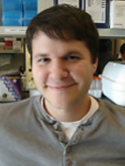Converting human pluripotent stem cells to neural tissue and neurons to model neurodegeneration Journal Article
| Authors: | Chambers, S. M.; Mica, Y.; Studer, L.; Tomishima, M. J. |
| Article Title: | Converting human pluripotent stem cells to neural tissue and neurons to model neurodegeneration |
| Abstract: | Human embryonic stem cells (hESCs) and the related induced pluripotent stem cells (hiPSCs) have attracted considerable attention since they can provide an unlimited source of many different tissue types. One challenge of using pluripotent cells is directing their broad differentiation potential into one specific tissue or cell fate. The cell fate choices of extraembryonic, endoderm, mesoderm, and ectoderm (including neural) lineages represent the earliest decisions. We found that pluripotent cells efficiently neuralize by blocking the signaling pathways required for alternative cell fate decisions. In this chapter, we detail methods to direct hESCs or hiPSCs into early neural cells and subsequently postmitotic neurons. © 2011 Springer Science+Business Media, LLC. |
| Keywords: | neurodegeneration; neural; disease modeling; dual smad inhibition; human pluripotent stem cells |
| Journal Title: | Methods in Molecular Biology |
| Volume: | 793 |
| ISSN: | 1064-3745 |
| Publisher: | Humana Press Inc |
| Date Published: | 2011-01-01 |
| Start Page: | 87 |
| End Page: | 97 |
| Language: | English |
| DOI: | 10.1007/978-1-61779-328-8_6 |
| PROVIDER: | scopus |
| PUBMED: | 21913095 |
| DOI/URL: | |
| Notes: | Chapter 6 in "Neurodegeneration: Methods and Protocols" (ISBN: 978-1-61779-327-1) --- Export Date: 9 December 2011 - Source: Scopus |
Altmetric
Citation Impact
BMJ Impact Analytics
Related MSK Work






